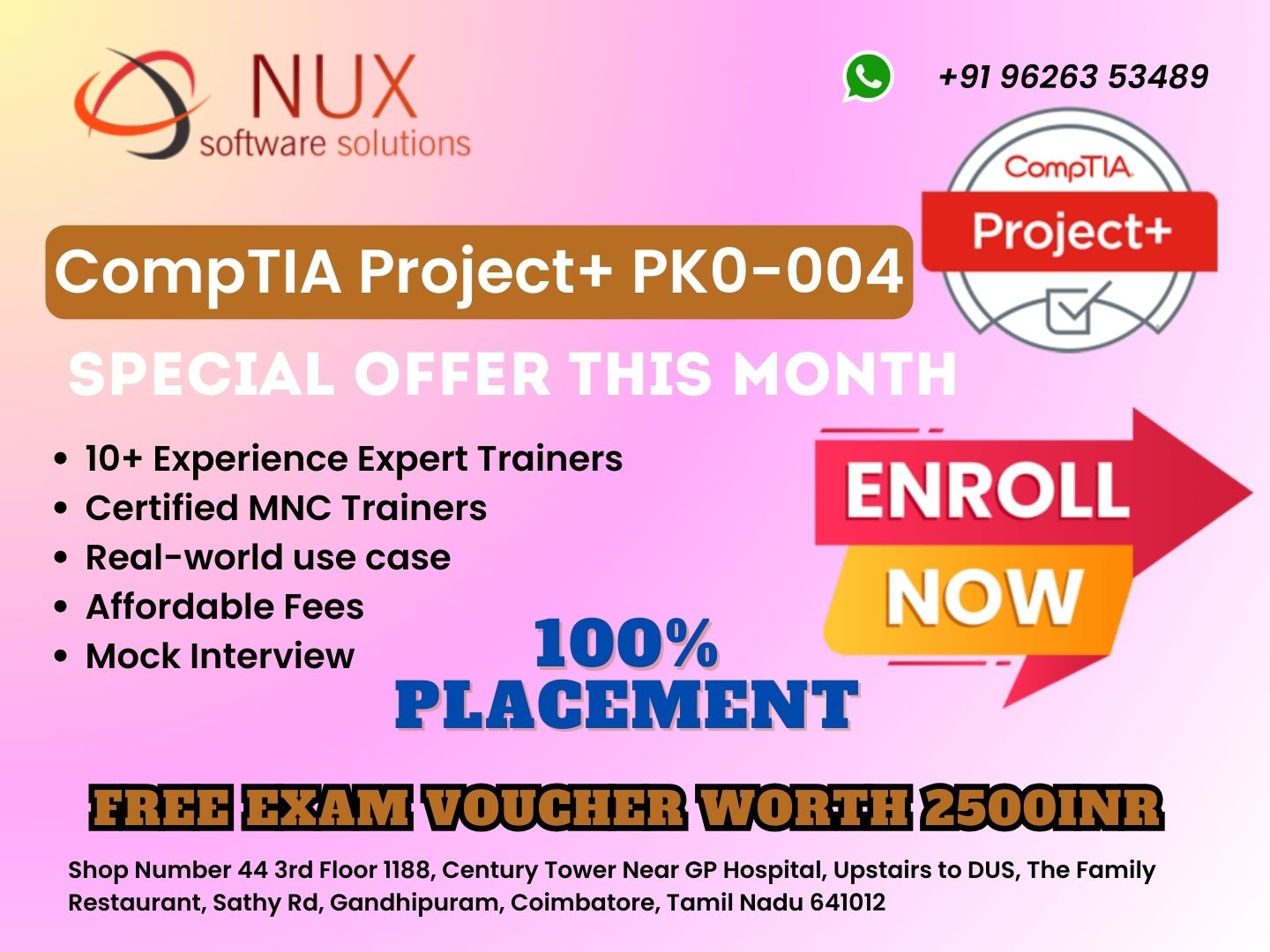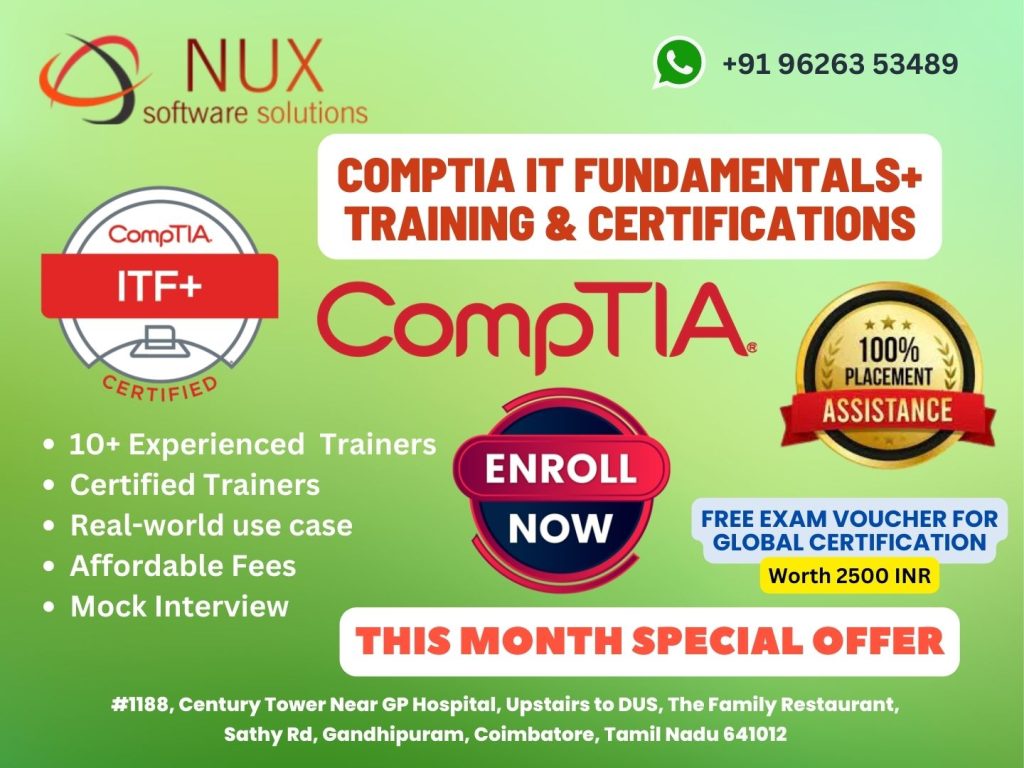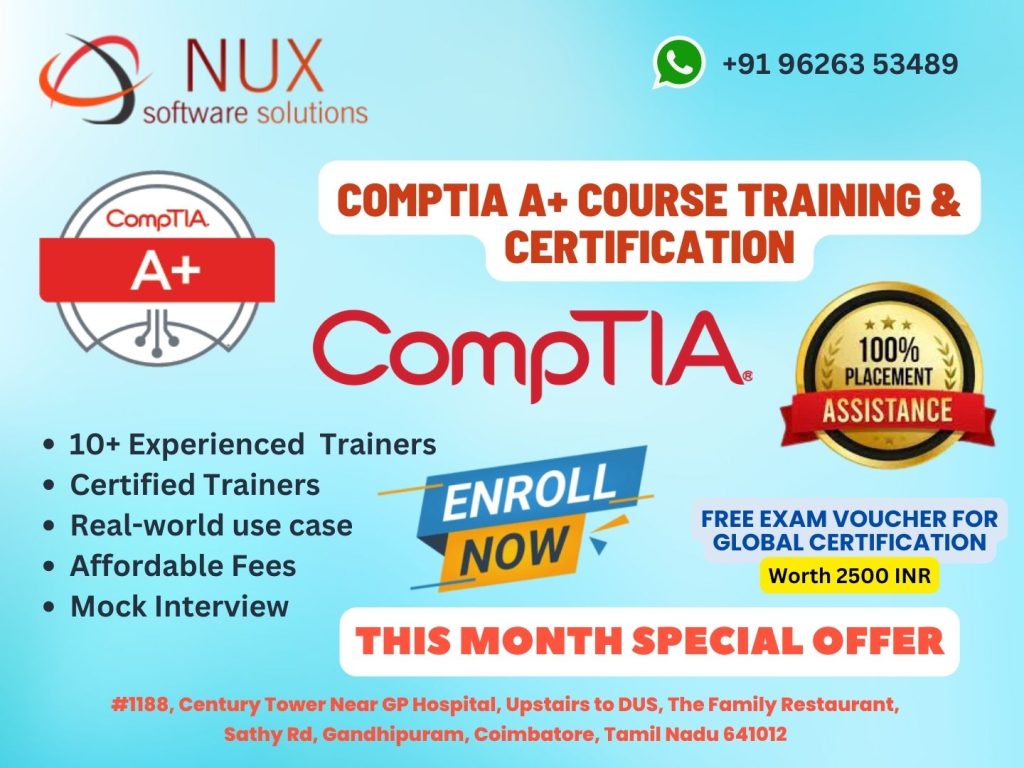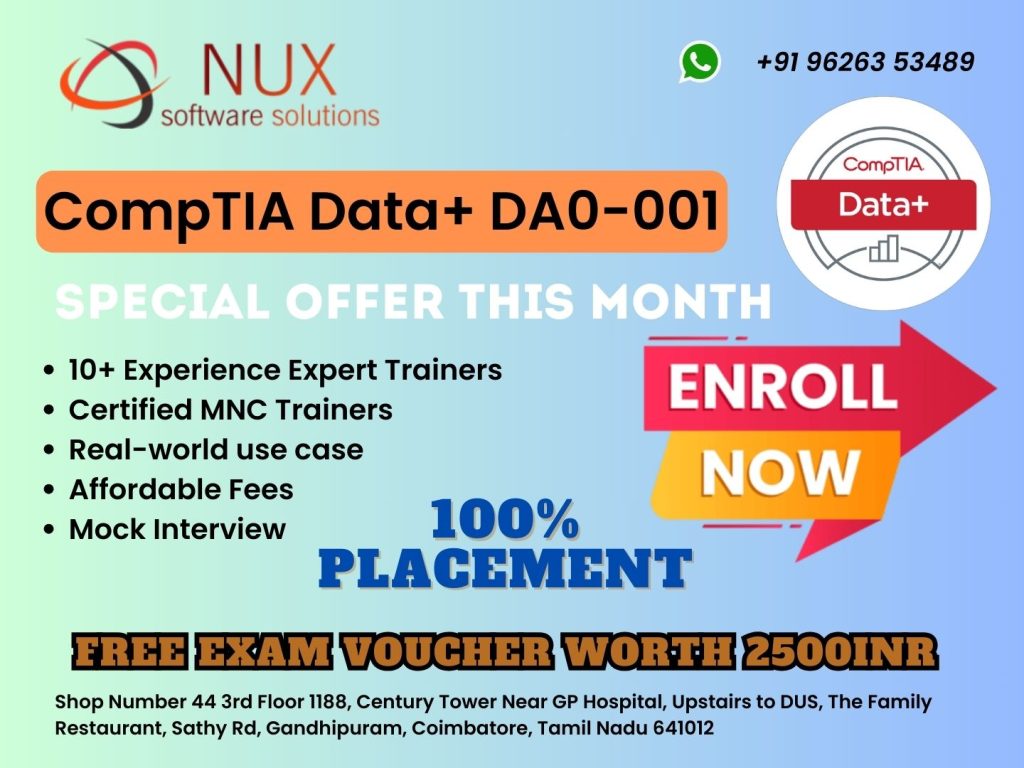CompTIA Project+ PK0-004 Training and Certification

Course Overview
The CompTIA Project+ PK0-004 certification training is a globally recognized program that equips professionals with essential project management skills, making them capable of handling small to medium-sized projects efficiently. This course covers fundamental concepts including project initiation, planning, execution, monitoring, and closure, while also addressing communication, risk management, budgeting, and stakeholder engagement.
Offered by our professional training institute in Coimbatore, this course is tailored for IT and non-IT professionals who need to manage projects as part of their job role but don’t require the deeper complexity of PMP or PRINCE2.
Who Should Enroll?
Entry-level and mid-level professionals managing or contributing to projects
Team leads, coordinators, or anyone who handles project documentation or timelines
Aspiring project managers who want a foundational certification
IT professionals transitioning to project-based roles
Candidates preparing for the CompTIA Project+ PK0-004 certification exam
What You Will Learn
Project Life Cycle Management: Understanding project phases, scope definition, scheduling, and deliverables
Project Roles and Responsibilities: Defining roles, managing stakeholders, and team dynamics
Project Communication: Planning effective communication, documentation, and reporting techniques
Resource and Cost Management: Budgeting, resource allocation, and vendor management
Risk Management: Identifying and mitigating project risks and constraints
Tools and Documentation: Using project planning tools, logs, and status reports
Key Course Features
Comprehensive curriculum mapped to CompTIA PK0-004 exam objectives
Practical case studies to simulate real project scenarios
Guidance on key project documentation and workflows
Practice tests and exam-focused revision modules
Project templates and tools for hands-on experience
Career Roles You Can Target
Project Coordinator
Junior Project Manager
IT Project Manager
Operations Manager
Business Analyst
Project Assistant
Why Choose Us?
Certified project management trainers with real-world experience
Exam-oriented preparation with high success rate
Flexible class schedules: weekdays, weekends, and online options
Placement support and resume-building assistance for project roles
Affordable pricing with high-quality learning resources
Start your project management journey with CompTIA Project+. Build skills that help you lead confidently and deliver projects on time and within budget.
CompTIA Project+ PK0-004 Syllabus
Modules
Chapters
Project Basics - 36%
- Temporary
- Start and finish
- Unique
- Reason/purpose
- Project as part of a program
- Project as part of a portfolio
- Sponsor/champion, Approval authority, Funding, Project charter, Baseline, High-level requirements, Control, Marketing, Roadblocks, Business case/justification, - Project manager, Manage team, communication, scope, risk, budget, and time, Manage quality assurance, Responsible for artifacts, - Project coordinator, Support project manager, Cross-functional coordination, Documentation/ administrative support, Time/resource scheduling, Check for quality, - Stakeholder, Vested interest, Provide input and requirements, Project steering, Expertise, - Scheduler, Develop and maintain project schedule, Communicate timeline and changes, Reporting schedule performance, Solicit task status from resources, - Project team, Contribute expertise to the project, Contribute deliverables according to schedule, Estimation of task duration, Estimation of costs and dependencies, - Project Management Office (PMO), Sets standards and practices for organization, Sets deliverables, Provides governance, Key performance indicators and parameters, Provides tools, Outlines consequences of non-performance, Standard documentation/templates, Coordinate resources between projects,
- Initiation, Project charter, Business case, High-level scope definition, High-level risks, - Planning, Schedule, Work breakdown structure, Resources, Detailed risks, Requirements, Communication plan, Procurement plan, Change management plan, Budget, - Execution, Deliverables, - Monitor and control, Risks/issues log, Performance measuring and reporting, Quality assurance/governance, Change control, Budget, - Closing, Transition/integration plan, Training, Project sign off, Archive project documents, Lessons learned, Release resources, Close contracts,
- Total project cost, - Expenditure tracking, - Expenditure reporting, - Burn rate, - Cost baseline/budget, Plan vs. actual,
- Functional, Resources reporting to functional manager, Project manager has limited or no authority, - Matrix, Authority is shared between functional managers and project managers, Resources assigned from functional area to project, Project manager authority ranges from weak to strong, - Projectized, Project manager has full authority, Resources report to project manager, Ad hoc resources,
- Work breakdown structure, - Scheduling activities, Determine tasks, Determine task start/finish dates, Determine activity/task durations, Determine milestones, Set predecessors, Set dependencies, Sequence tasks, Prioritize tasks, Determine critical path, Allocate resources, Set baseline, Set quality gates, Set governance gates, Client sign off, Management approval, Legislative approval,
- Readily adapt to new/ changing requirements, - Iterative approach, - Continuous requirements gathering, - Establish a backlog, - Burndown charts, - Continuous feedback, - Sprint planning, - Daily standup meetings/ SCRUM meetings, - SCRUM retrospective, - Self-organized and self-directed teams,
- Resource management concepts, Shared resources, Dedicated resources, Resource allocation, Resource shortage, Resource overallocation, Low quality resources, Benched resources, Interproject dependencies, Interproject resource contention, - Personnel management, Team building, Trust building, Team selection, Skill sets, Remote vs. in-house, Personnel removal/replacement, Communication issues, Conflict resolution, Smoothing, Forcing, Compromising, Confronting, Avoiding, Negotiating,
Project Constraints - 17%
- Common constraints, Budget, Scope, Deliverables, Quality, Environment, Resources, Requirements, Scheduling, - Influences, Change request, Scope creep, Constraint reprioritization, Interaction between constraints, Stakeholders/sponsors/management, Other projects,
- Strategies, Accept, Mitigate, Transfer, Avoid, Exploit, - Risk activities, Identification, Quantification, Planning, Review, Response, Register, Prioritization, Communication,
Communication & Change Management - 26%
- Meetings, Kick-off meetings, Virtual vs. in-person meetings, Scheduled vs. impromptu meetings, Closure meetings, - Email, - Fax, - Instant messaging, - Video conferencing, - Voice conferencing, - Face-to-face, - Text message, - Distribution of printed media, - Social media,
- Language barriers, - Time zones/geographical factors, - Technological factors, - Cultural differences, - Interorganizational differences, - Intraorganizational differences, - Personal preferences, - Rapport building/relationship building, - Tailor method based on content of message, - Criticality factors, - Specific stakeholder communication requirements, Frequency, Level of report detail, Types of communication, Confidentiality constraints, Tailor communication style,
- Audits, - Project planning, - Project change, - Risk register updates, - Milestones, - Schedule changes, - Task initiation/completion, - Stakeholder changes, - Gate reviews, - Business continuity response, - Incident response, - Resource changes,
- Change control process, Identify and document, Evaluate impact and justification, Regression plan (Reverse changes), Identify approval authority, Obtain approval, Implement change, Validate change/quality check, Update documents/audit documents/version control, Communicate throughout as needed, - Types of common project changes, Timeline change, Funding change, Risk event, Requirements change, Quality change, Resource change, Scope change,
- Business merger/acquisition, - Business demerger/split, - Business process change, - Internal reorganization, - Relocation 6. Outsourcing,
Project Tools & Documentation - 21%
- Project scheduling software, - Charts, Process diagram, Histogram, Fishbone, Pareto chart, Run chart, Scatter chart, Gantt chart, - Dashboard/status report, - Knowledge management tools, Intranet sites, Internet sites, Wiki pages, Vendor knowledge bases, Collaboration tools, - Performance measurement tools, Key performance indicators, Key performance parameters, Balanced score card, - SWOT analysis, - Responsible, Accountable, Consulted, Informed (RACI) Matrix,
- Project charter, - Project management plan, - Issues log, - Organizational chart, - Scope statement, - Communication plan, - Project schedule, - Status report, - Dashboard information, - Action items, - Meeting agenda/meeting minutes,
- Request for Information, - Request for Proposal, - Request for Quote, - Mutually binding documents, Agreements/contract, Non-disclosure agreement, Cease and Desist letter, Letter of Intent, Statement of Work, Memorandum of Understanding, Service Level Agreement, Purchase Order, Warranty,



